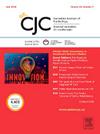Is the Time Right for Preventive Cardiology Guidelines on Sedentary Behaviours and Sitting Time?
IF 5.3
2区 医学
Q1 CARDIAC & CARDIOVASCULAR SYSTEMS
引用次数: 0
Abstract
In this review sedentary behaviour (SB) is considered beyond its simplistic definition of “sitting” and also includes sedentary activities. We explore the definition, physiological characteristics, prevalence, and guidelines of SB, contrasting it with physical activity (PA). The discussion encompasses: (1) the association between SB and mortality, with a specific focus on cardiovascular (CV) outcomes; (2) biological mechanisms that link SB to CV health, additionally differentiating between the effects of acute and chronic sitting; (3) sex and gender differences in SB; and (4) SB as an independent CV risk factor is explored. The review concludes with an examination of the potential beneficial effects of PA on mitigating the detrimental effects of SB and an analysis of evidence that supports the use of break-up strategies in preventive cardiology. This analysis sheds light on the significant deleterious consequences of SB on CV health. It highlights the potential of incorporating strategies to reduce and interrupt prolonged sitting alongside existing guidelines that promote PA. These findings suggest considering SB as a major CV risk factor, and emphasize the importance of targeting SB reduction and interruption as a valuable approach for preventing and managing CV disease. However, further research is needed to determine the long-term effectiveness of SB interventions, to inform the development of optimal guidelines for CV health management.
现在是制定关于久坐行为和久坐时间的预防心脏病学指南的时候了吗?
这篇综述对久坐行为(SB)的研究超越了对“坐”的简单定义,同时也包括了久坐活动。探讨SB的定义、生理特征、流行情况和指导方针,并将其与体育活动(PA)进行对比。讨论内容包括:1)SB与死亡率之间的关系,特别关注心血管(CV)结局;2)探讨SB与心血管健康的生物学机制,区分急性和慢性久坐对心血管健康的影响,3)SB的性别差异,4)SB作为独立的心血管危险因素。该综述总结了PA在减轻SB有害影响方面的潜在有益作用,并分析了支持在预防心脏病学中使用分手策略的证据。该分析揭示了SB对心血管健康的重大危害。它强调了将减少和中断长时间坐着的策略与现有的促进PA的指南结合起来的潜力。这些发现提示将SB视为一个主要的心血管危险因素,强调靶向SB减少和中断作为预防和管理CV疾病的有价值方法的重要性。然而,需要进一步的研究来确定SB干预措施的长期有效性,为制定心血管健康管理的最佳指南提供信息。
本文章由计算机程序翻译,如有差异,请以英文原文为准。
求助全文
约1分钟内获得全文
求助全文
来源期刊

Canadian Journal of Cardiology
医学-心血管系统
CiteScore
9.20
自引率
8.10%
发文量
546
审稿时长
32 days
期刊介绍:
The Canadian Journal of Cardiology (CJC) is the official journal of the Canadian Cardiovascular Society (CCS). The CJC is a vehicle for the international dissemination of new knowledge in cardiology and cardiovascular science, particularly serving as the major venue for Canadian cardiovascular medicine.
 求助内容:
求助内容: 应助结果提醒方式:
应助结果提醒方式:


